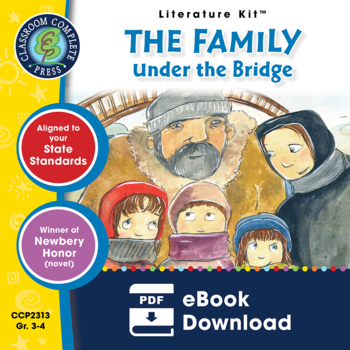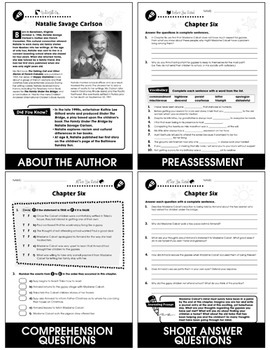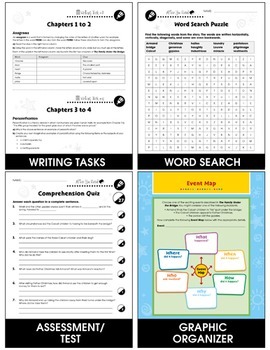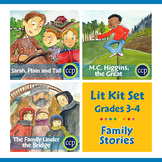The Family Under the Bridge - Literature Kit Gr. 3-4
- PDF
What educators are saying
Also included in
- In this State Standards-aligned Literature Kit™ Set, we combine 3 of our family stories novel study guides for grades 3-4. Take a Peek Inside:Each guide divides the novel by chapters or sections and feature reading comprehension and vocabulary questions. In every chapter, we include Before You ReadPrice $23.96Original Price $38.85Save $14.89
Description
A Literature Kit for the novel The Family Under the Bridge written by Natalie Savage Carlson.
Take a Peek Inside:
Expose your students to the hardships of poverty and the power that comes with family. Multi-leveled questions and prompts will have students digging deeper while making connections. Investigate the setting to determine what is already known about the historic country of France. Explain what is ironic about Armand's words to the pigeons. Recall what was read by completing a paragraph from the novel with its missing words. Predict what will happen with the children's request to Father Christmas after a cliffhanger. Research information on Provence, Saint Sara or the Tournelle Bridge and create a report with interesting facts on these places mentioned in the novel. Complete an analysis of the novel, detailing the conflict, setting, point of view and theme, among others.
About the Novel:
The Family Under the Bridge is a Newbery Honor winning story about the Calcet family—a mother and her three children—who end up living under a bridge on the Seine River. Here, they befriend the carefree Parisian hobo, Armand. When two nosy women appear at their makeshift home, and it appears that the authorities have been summoned, Armand takes the family to live with a community of gypsies. Here, they are befriended and their relationship with the old hobo deepens. After promising the children a new home for Christmas, Armand decides his only option is to seek employment, and he manages to get a job as the caretaker of an apartment building, which offers the family a place to stay. Here, they determine to live as one big family, with Armand serving as the grandfather the children never had.
Aligned to your State Standards and written to Bloom's Taxonomy, additional crossword, word search, comprehension quiz and answer key are also included.
************************************************************************
View Similar Titles:
► Because of Winn-Dixie - Literature Kit Gr. 3-4
► James and the Giant Peach - Literature Kit Gr. 3-4
► Sarah, Plain and Tall - Literature Kit Gr. 3-4
************************************************************************
Aligned to Common Core
RL.3.1, RL.3.2, RL.3.3, RL.3.4, RL.3.5, RL.3.6, RL.3.7, RL.3.10, RL.4.1, RL.4.2, RL.4.3, RL.4.4, RL.4.6, RL.4.10, RF.3.3, RF.3.4, RF.4.3, RF.4.4, W.3.1, W.3.2, W.3.3, W.3.4, W.3.7, W.3.8, W.4.1, W.4.2, W.4.4, W.4.7, W.4.8, W.4.9
************************************************************************
Check out our sister TPT shops:






